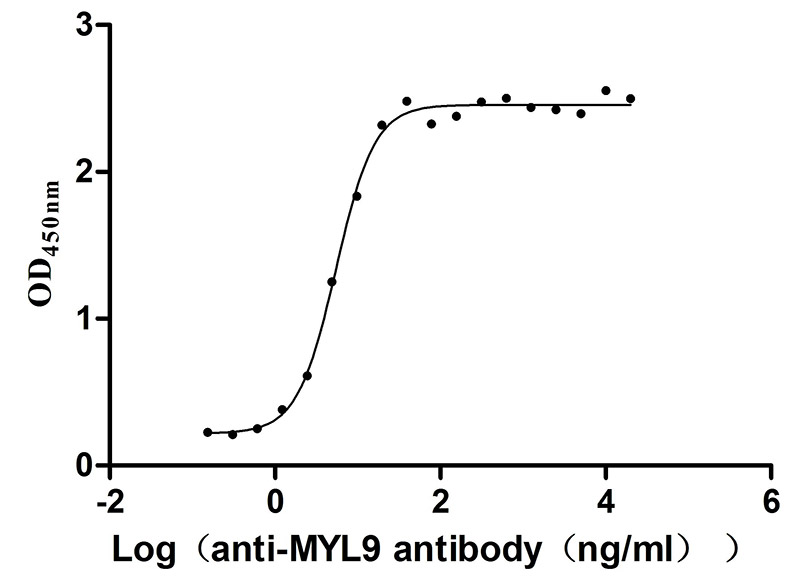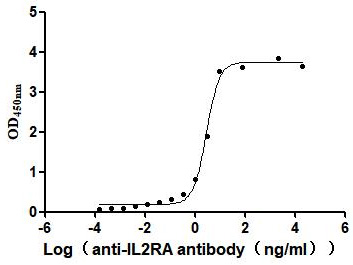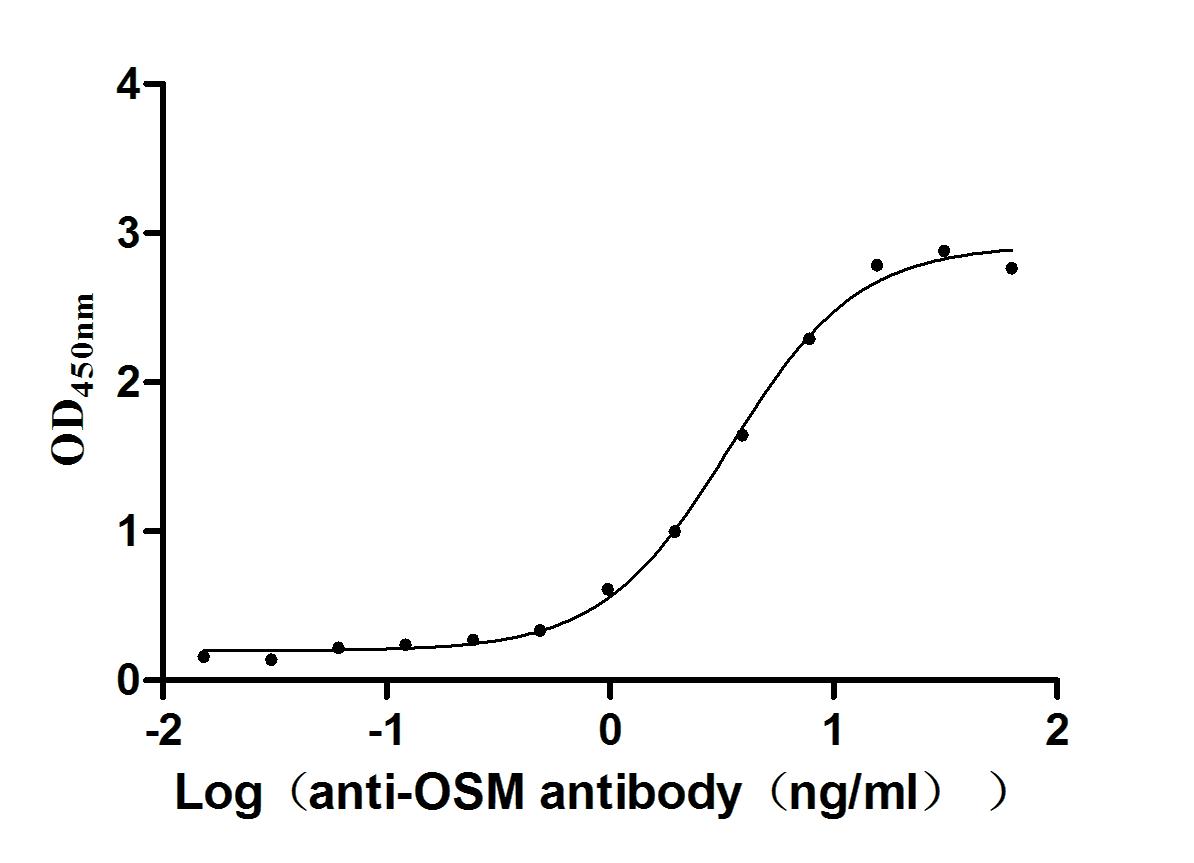Recombinant Human Protein HIRA (HIRA), partial
-
中文名稱:人HIRA重組蛋白
-
貨號(hào):CSB-YP010371HU
-
規(guī)格:
-
來(lái)源:Yeast
-
其他:
-
中文名稱:人HIRA重組蛋白
-
貨號(hào):CSB-EP010371HU
-
規(guī)格:
-
來(lái)源:E.coli
-
其他:
-
中文名稱:人HIRA重組蛋白
-
貨號(hào):CSB-EP010371HU-B
-
規(guī)格:
-
來(lái)源:E.coli
-
共軛:Avi-tag Biotinylated
E. coli biotin ligase (BirA) is highly specific in covalently attaching biotin to the 15 amino acid AviTag peptide. This recombinant protein was biotinylated in vivo by AviTag-BirA technology, which method is BriA catalyzes amide linkage between the biotin and the specific lysine of the AviTag.
-
其他:
-
中文名稱:人HIRA重組蛋白
-
貨號(hào):CSB-BP010371HU
-
規(guī)格:
-
來(lái)源:Baculovirus
-
其他:
-
中文名稱:人HIRA重組蛋白
-
貨號(hào):CSB-MP010371HU
-
規(guī)格:
-
來(lái)源:Mammalian cell
-
其他:
產(chǎn)品詳情
-
純度:>85% (SDS-PAGE)
-
基因名:HIRA
-
Uniprot No.:
-
別名:DGCR1; DiGeorge critical region gene 1; HIR; HIR histone cell cycle regulation defective homolog A; HIRA; HIRA protein; HIRA_HUMAN; Histone cell cycle regulator; Protein HIRA; TUP 1; TUP1 like enhancer of split protein 1; TUP1-like enhancer of split protein 1; TUPLE1
-
種屬:Homo sapiens (Human)
-
蛋白長(zhǎng)度:Partial
-
蛋白標(biāo)簽:Tag?type?will?be?determined?during?the?manufacturing?process.
The tag type will be determined during production process. If you have specified tag type, please tell us and we will develop the specified tag preferentially. -
產(chǎn)品提供形式:Lyophilized powder
Note: We will preferentially ship the format that we have in stock, however, if you have any special requirement for the format, please remark your requirement when placing the order, we will prepare according to your demand. -
復(fù)溶:We recommend that this vial be briefly centrifuged prior to opening to bring the contents to the bottom. Please reconstitute protein in deionized sterile water to a concentration of 0.1-1.0 mg/mL.We recommend to add 5-50% of glycerol (final concentration) and aliquot for long-term storage at -20℃/-80℃. Our default final concentration of glycerol is 50%. Customers could use it as reference.
-
儲(chǔ)存條件:Store at -20°C/-80°C upon receipt, aliquoting is necessary for mutiple use. Avoid repeated freeze-thaw cycles.
-
保質(zhì)期:The shelf life is related to many factors, storage state, buffer ingredients, storage temperature and the stability of the protein itself.
Generally, the shelf life of liquid form is 6 months at -20°C/-80°C. The shelf life of lyophilized form is 12 months at -20°C/-80°C. -
貨期:Delivery time may differ from different purchasing way or location, please kindly consult your local distributors for specific delivery time.Note: All of our proteins are default shipped with normal blue ice packs, if you request to ship with dry ice, please communicate with us in advance and extra fees will be charged.
-
注意事項(xiàng):Repeated freezing and thawing is not recommended. Store working aliquots at 4°C for up to one week.
-
Datasheet :Please contact us to get it.
相關(guān)產(chǎn)品
靶點(diǎn)詳情
-
功能:Cooperates with ASF1A to promote replication-independent chromatin assembly. Required for the periodic repression of histone gene transcription during the cell cycle. Required for the formation of senescence-associated heterochromatin foci (SAHF) and efficient senescence-associated cell cycle exit.
-
基因功能參考文獻(xiàn):
- These data show that HIRA phosphorylation limits the expression of myogenic genes, while the dephosphorylation of HIRA is required for proficient H3.3 deposition and gene activation, demonstrating that the phosphorylation switch is exploited to modulate HIRA/H3.3-mediated muscle gene regulation during myogenesis. PMID: 27515126
- Data show that histone chaperone HIRA co-localizes with viral genomes, binds to incoming viral and deposits histone H3.3 onto these. PMID: 28981850
- Chromatin reassembly during double-strand break repair was dependent on the HIRA histone chaperone that is specific to the replication-independent histone variant H3.3 and on CAF-1 that is specific to the replication-dependent canonical histones H3.1/H3.2. PMID: 27269284
- RPA, best known for its role in DNA replication and repair, recruits HIRA to promoters and enhancers and regulates deposition of newly synthesized H3.3 to these regulatory elements for gene regulation. PMID: 28107649
- H3.Y discriminates between HIRA and DAXX chaperone complexes and reveals unexpected insights into human DAXX-H3.3-H4 binding and deposition requirements. PMID: 28334823
- PHB has an unexpected nuclear role in human embryonic stem cells that is required for self-renewal and that it acts with HIRA in chromatin organization to link epigenetic organization to a metabolic circuit. PMID: 27939217
- The abnormal lower expression of the HIRA gene in the myocardium may participate in the pathogenesis of Tetralogy of Fallot. PMID: 27748330
- These results support a model in which OGT modifies HIRA to regulate HIRA-H3.3 complex formation and H3.3 nucleosome assembly and reveal the mechanism by which OGT functions in cellular senescence. PMID: 27217568
- HIRA controls a specialized, dynamic H4K16ac-decorated chromatin landscape in senescent cells and enforces tumor suppression. PMID: 25512559
- Mechanistic studies reveal that HIRA accumulates at sites of UVC irradiation upon detection of DNA damage prior to repair and deposits newly synthesized H3.3 histones. This local action of HIRA depends on ubiquitylation events associated with damage recognition. PMID: 24074863
- HIRA is required for deposition of histone H3.3 at its binding sites. PMID: 23602572
- NHRD domain of UBN1 as being an essential region for HIRA interaction and chromatin organization by the HUCA complex PMID: 22401310
- HIRA plays a unique, ASF1a-independent role, which is required for the localization of HP1 PMID: 21347226
- Data show that, like HIRA, UBN1, and ASF1a, CABIN1 is involved in heterochromatinization of the genome of senescent human cells. PMID: 21807893
- phosphorylation of histone H4 Ser 47 catalyzed by the PAK2 kinase, promotes nucleosome assembly of H3.3-H4 and inhibits nucleosome assembly of H3.1-H4 by increasing the binding affinity of HIRA to H3.3-H4 and reducing association of CAF-1 with H3.1-H4 PMID: 21724829
- the N-terminal half of HIRA should contribute positively to the growth rate via up-regulation of a set of cell cycle-related genes, whereas the C-terminal half down-regulated another set of them without exhibiting any effect on the cell growth PMID: 16024922
- The N- and C-terminal regions of ASF1a and ASF1b determine the different affinities of these two proteins for HIRA, by contacting regions outside the HIRA B domain. CAF-1 also uses B domain-like motifs for binding to ASF1a, thereby competing with HIRA. PMID: 16980972
- Hpc2-related domain of UBN1, UBN2, and Hpc2p is an evolutionarily conserved HIRA/Hir-binding domain, which directly interacts with the N-terminal WD repeats of HIRA/Hir. PMID: 19029251
- FISH analysis of metaphases revealed a duplication of TUPLE1 probe on one chromosome 22q (Fig. 1). PMID: 19046189
顯示更多
收起更多
-
亞細(xì)胞定位:Nucleus. Nucleus, PML body. Note=Primarily, though not exclusively, localized to the nucleus. Localizes to PML bodies immediately prior to onset of senescence.
-
蛋白家族:WD repeat HIR1 family
-
組織特異性:Expressed at high levels in kidney, pancreas and skeletal muscle and at lower levels in brain, heart, liver, lung, and placenta.
-
數(shù)據(jù)庫(kù)鏈接:
Most popular with customers
-
Recombinant Human Receptor tyrosine-protein kinase erbB-3 (ERBB3), partial (Active)
Express system: Mammalian cell
Species: Homo sapiens (Human)
-
Recombinant Human Tumor necrosis factor receptor superfamily member 9 (TNFRSF9), partial (Active)
Express system: Mammalian cell
Species: Homo sapiens (Human)
-
Recombinant Human Insulin growth factor-like family member 1 (IGFL1) (Active)
Express system: Mammalian cell
Species: Homo sapiens (Human)
-
Recombinant Rat Intestinal-type alkaline phosphatase 1 (Alpi) (Active)
Express system: Mammalian cell
Species: Rattus norvegicus (Rat)
-
Recombinant Human Interleukin-17A (IL17A) (T26A) (Active)
Express system: Baculovirus
Species: Homo sapiens (Human)
-
Recombinant Human Myosin regulatory light polypeptide 9 (MYL9) (Active)
Express system: Yeast
Species: Homo sapiens (Human)
-
Recombinant Human Interleukin-2 receptor subunit alpha (IL2RA), partial (Active)
Express system: Mammalian cell
Species: Homo sapiens (Human)
-
Recombinant Human Oncostatin-M (OSM), partial (Active)
Express system: Mammalian cell
Species: Homo sapiens (Human)


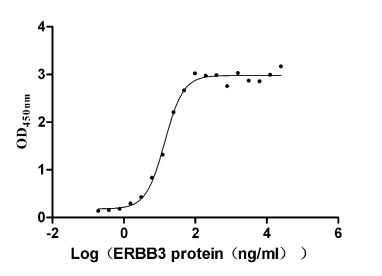
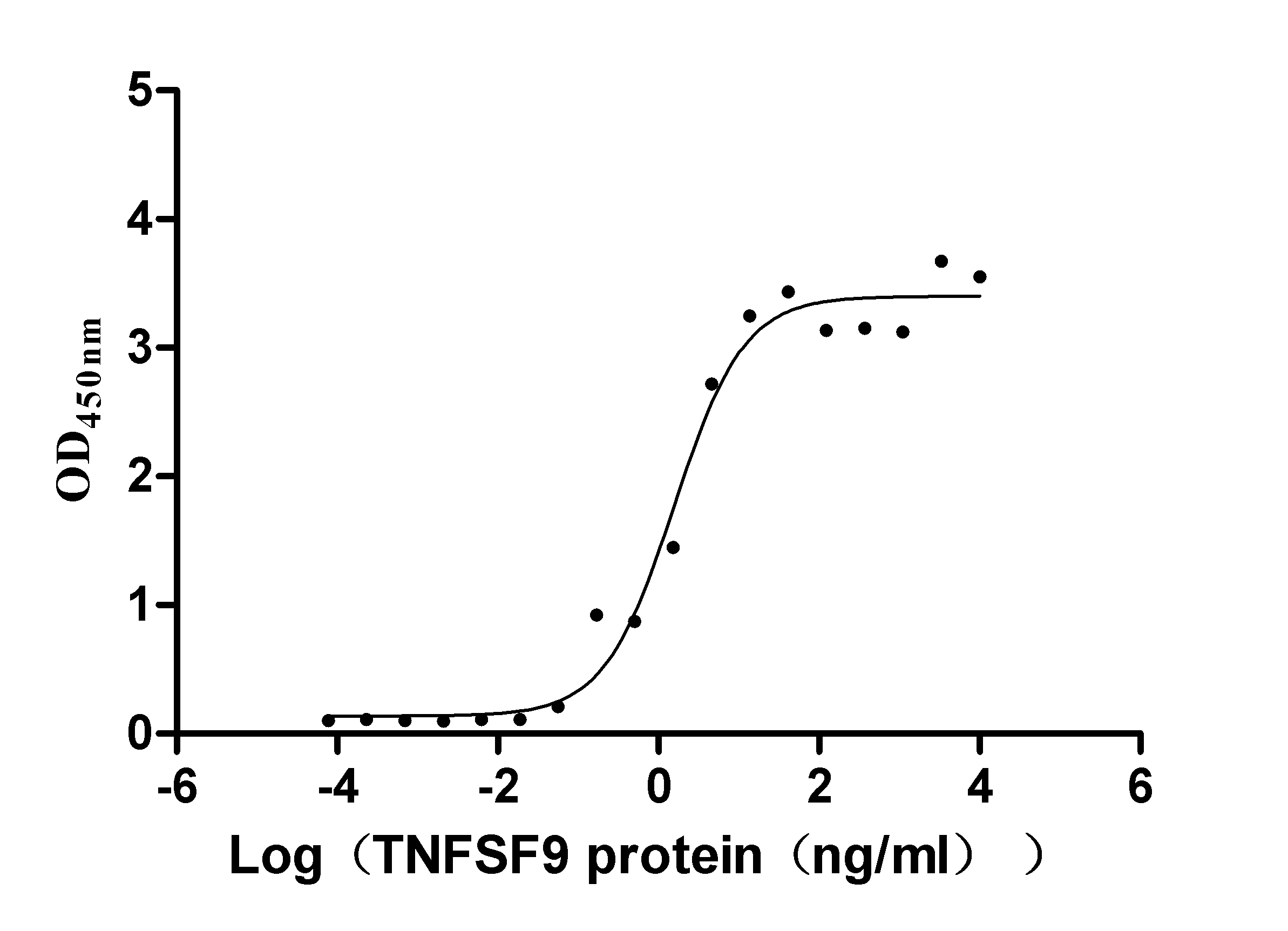
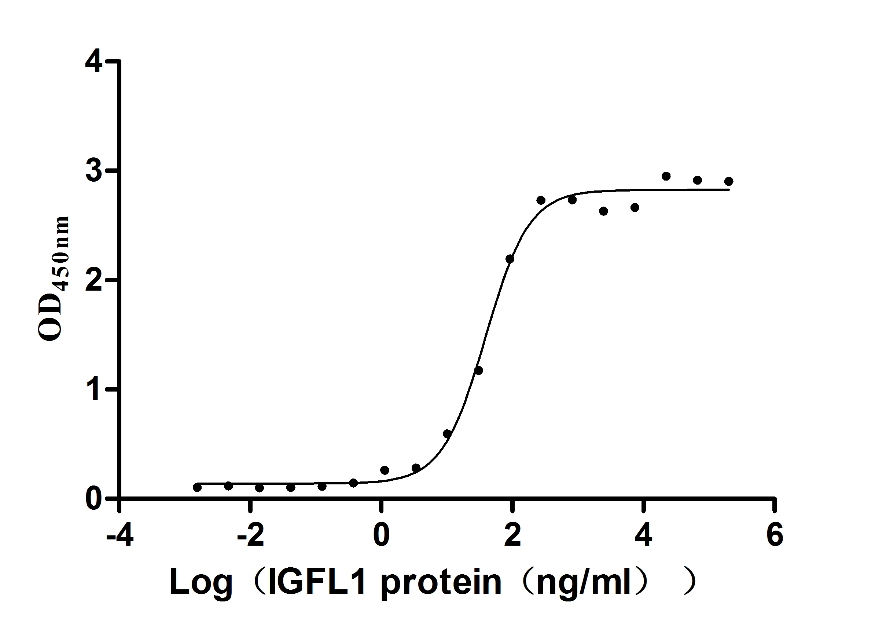

-AC1.jpg)
